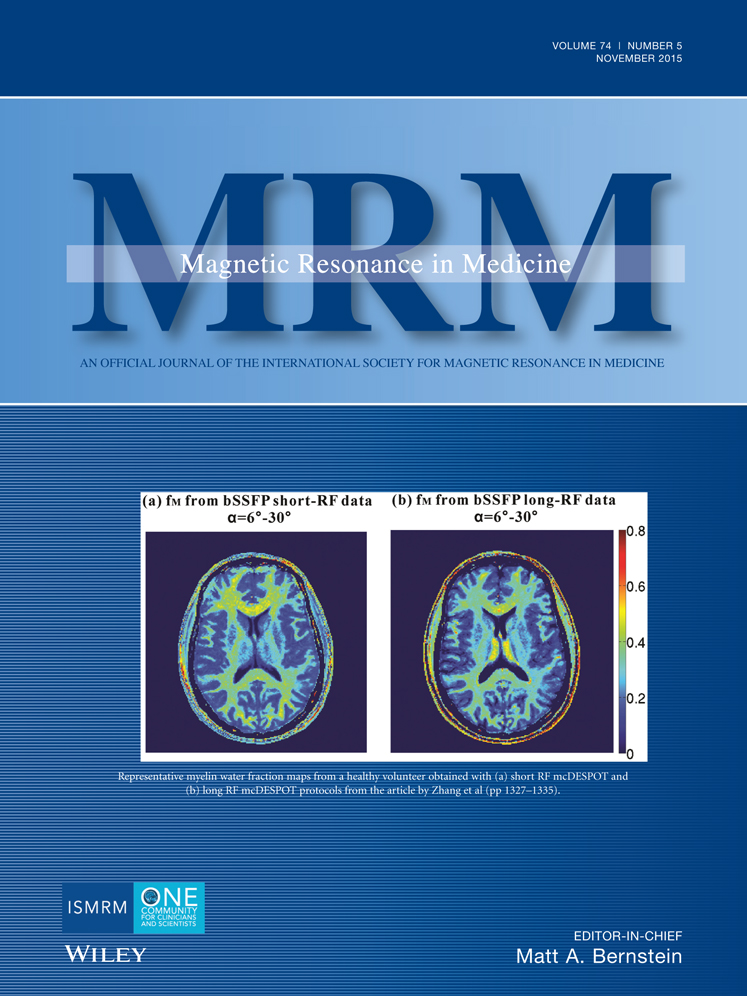SENSE and simultaneous multislice imaging
Abstract
Purpose
Simultaneous multislice (SMS) acquisitions play an important role in the challenge of increasing single-shot imaging speed. We show that sensitivity encoding in two spatial dimensions (two-dimensional sensitivity encoding [2D-SENSE]) can be used to reconstruct SMS acquisitions with periodic but otherwise arbitrary undersampling patterns.
Theory and Methods
By adopting a 3D k-space representation of the SMS sampling process, the accelerated in-plane and slice-encoding directions form a 2D-reconstruction problem that is equivalent to volumetric controlled aliasing in parallel imaging results in higher acceleration (CAIPIRINHA). 2D-SENSE does not otherwise distinguish between standard volumetric and SMS imaging with arbitrary CAIPIRINHA sampling.
Results
Use of the SENSE algorithm is demonstrated for in vivo brain data obtained with blipped-CAIPRINHA sampling in 2D SMS-echo planar imaging (EPI) and rapid acquisition with relaxation enhancement (RARE) acquisitions as well as 3D-EPI with various in-plane and through-plane acceleration factors and CAIPIRINHA shifts. The proposed SENSE reconstruction works for any combination of SMS-factor and CAIPIRINHA shift by the addition of “dummy slices” that allow for noninteger undersampling in the slice direction. Images with commonly used slice-generalized autocalibrating partially parallel acquisitions reconstruction are shown for reference.
Conclusion
SENSE is conceptually simple and provides a one-step reconstruction along both undersampled dimensions. It also provides a contrast-independent parallel imaging reconstruction for SMS. Magn Reson Med 74:1356–1362, 2015. © 2014 Wiley Periodicals, Inc.




